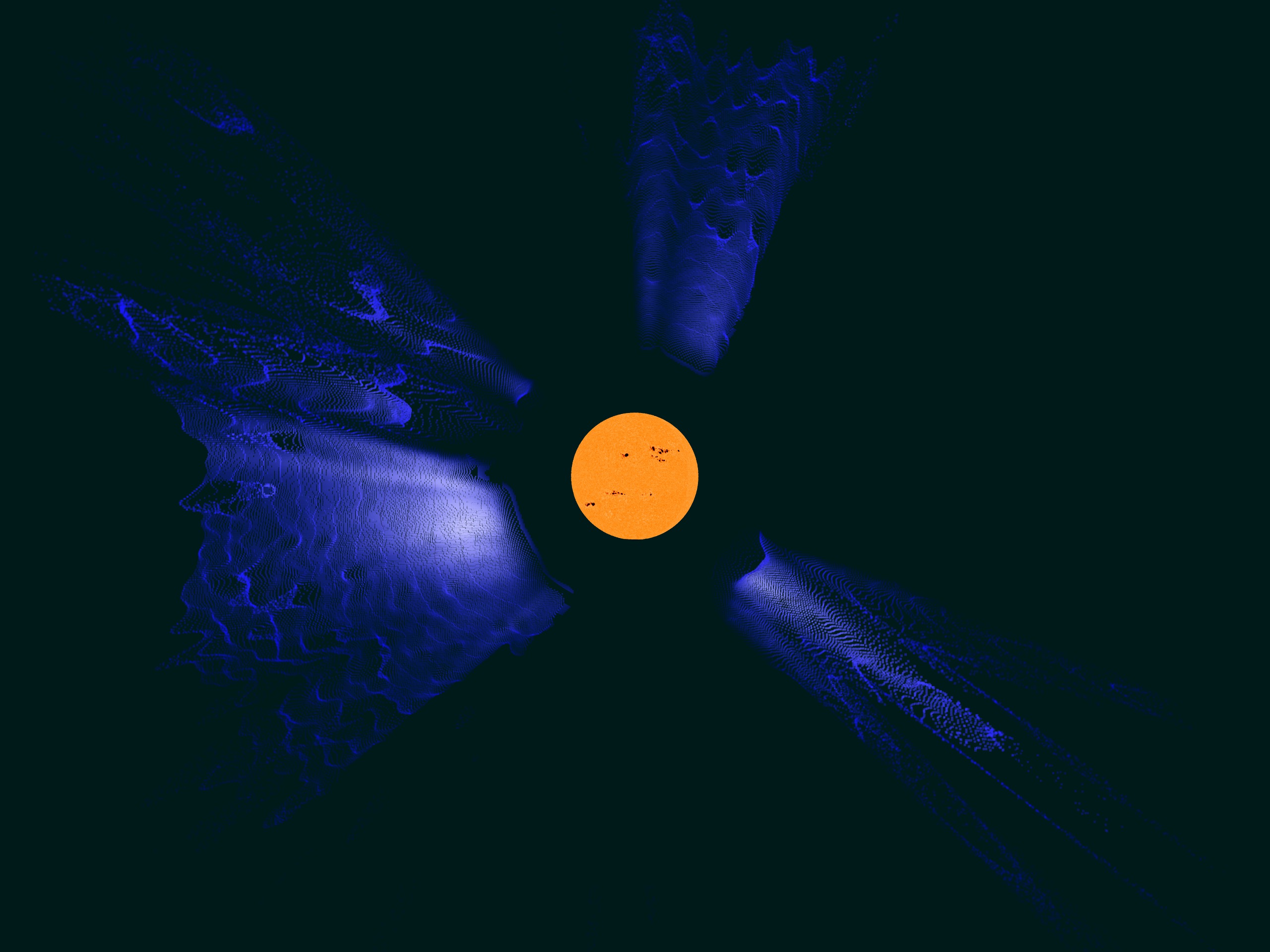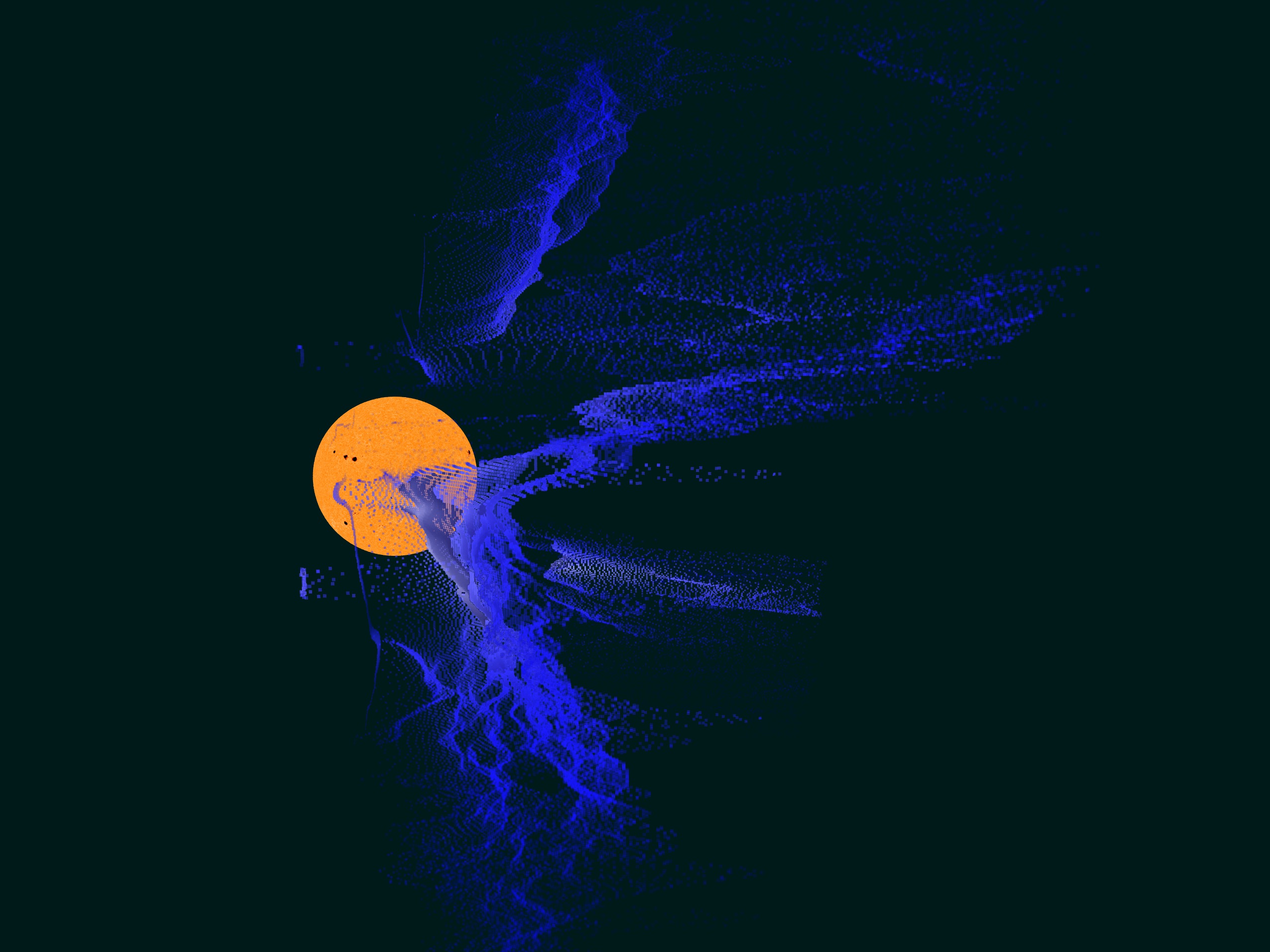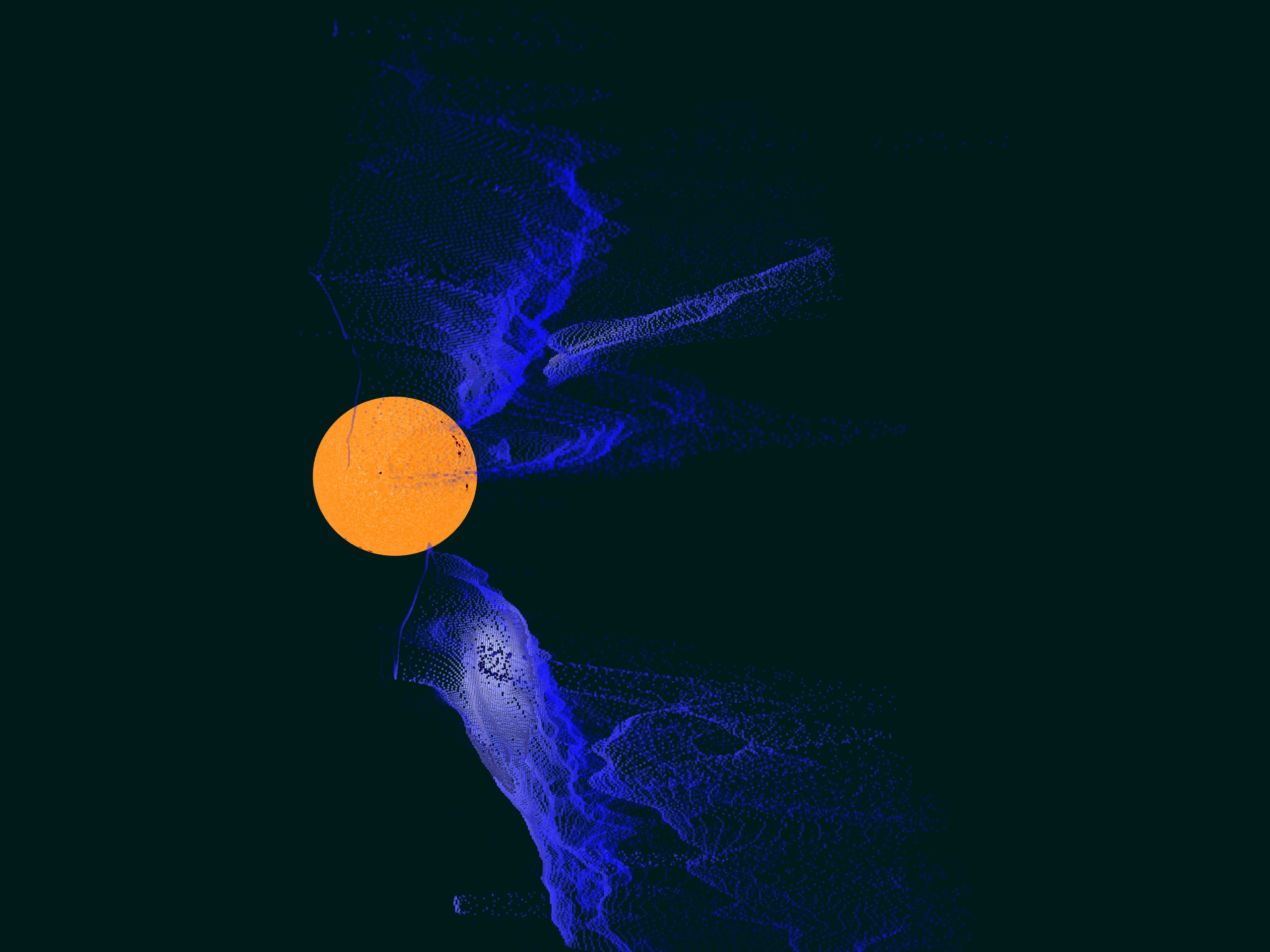Sun
ID: 2950
Using differences in polarization of light directly from the Sun vs. scattered from the CME electrons, it is possible to derive a distance of matter along the line-of-sight. This version is an early release of animation #2958.



Building a 3-D Coronal Mass Ejection from 2-D Data



Visualization Credits
Please give credit for this item to:
NASA/Goddard Space Flight Center Scientific Visualization Studio
NASA/Goddard Space Flight Center Scientific Visualization Studio
Science Paper:
Moran, T.G. and Davila, J.M., 2004, Science 305, pp. 66-70.
Short URL to share this page:
https://svs.gsfc.nasa.gov/2950
Mission:
SOHO
Data Used:
Note: While we identify the data sets used in these visualizations, we do not store any further details nor the data sets themselves on our site.
This item is part of this series:
3-D Coronal Mass Ejections
Keywords:
SVS >> SOHO
DLESE >> Space science
NASA Science >> Sun
GCMD >> Earth Science >> Sun-earth Interactions >> Solar Activity >> Coronal Mass Ejections
GCMD keywords can be found on the Internet with the following citation: Olsen, L.M., G. Major, K. Shein, J. Scialdone, S. Ritz, T. Stevens, M. Morahan, A. Aleman, R. Vogel, S. Leicester, H. Weir, M. Meaux, S. Grebas, C.Solomon, M. Holland, T. Northcutt, R. A. Restrepo, R. Bilodeau, 2013. NASA/Global Change Master Directory (GCMD) Earth Science Keywords. Version 8.0.0.0.0
Moran, T.G. and Davila, J.M., 2004, Science 305, pp. 66-70.
Short URL to share this page:
https://svs.gsfc.nasa.gov/2950
Mission:
SOHO
Data Used:
SOHO/Michelson Doppler Interferometer (MDI) also referred to as: SOHO/MDI
NASA and ESA - 1999-06-29SOHO/Large Angle Spectrometric COronagraph (LASCO)/C2 also referred to as: LASCO/C2
NASA and ESA - 1999-06-29This item is part of this series:
3-D Coronal Mass Ejections
Keywords:
SVS >> SOHO
DLESE >> Space science
NASA Science >> Sun
GCMD >> Earth Science >> Sun-earth Interactions >> Solar Activity >> Coronal Mass Ejections
GCMD keywords can be found on the Internet with the following citation: Olsen, L.M., G. Major, K. Shein, J. Scialdone, S. Ritz, T. Stevens, M. Morahan, A. Aleman, R. Vogel, S. Leicester, H. Weir, M. Meaux, S. Grebas, C.Solomon, M. Holland, T. Northcutt, R. A. Restrepo, R. Bilodeau, 2013. NASA/Global Change Master Directory (GCMD) Earth Science Keywords. Version 8.0.0.0.0











